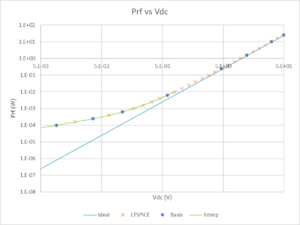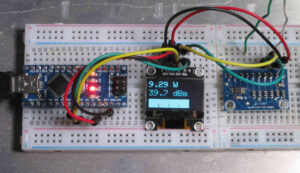One of the popular ideas online is that the correction process in the NanoVNA does not correct errors in mismatch at Port 1 and Port 2. This article deals with the first case ONLY, Port 1 mismatch.
An experiment with source VSWR nominally 2:1
A NanoVNA was configured with a SMA tee connected to Port 1 and a good 50Ω termination connected to the branch port, see the pic below. The left hand side of the tee becomes the new Port 1 interface, and by virtue of the additional 50Ω shunt termination, if the native Port 1 was indeed well represented by a Thevenin equivalent circuit with Zs close to 50+j0, the Thevenin source impedance is now closer to half that, Zs close to 25+j0.
Some would calculate this mismatch as causing a mismatch loss of 0.512dB that is additional loss in the s21 path.
Above is the test setup. The NanoVNA was SOLT calibrated with cal parts attached to the left hand side of the tee and the 200mm coax jumper from that point to Port 2. Continue reading NanoVNA source mismatch error










